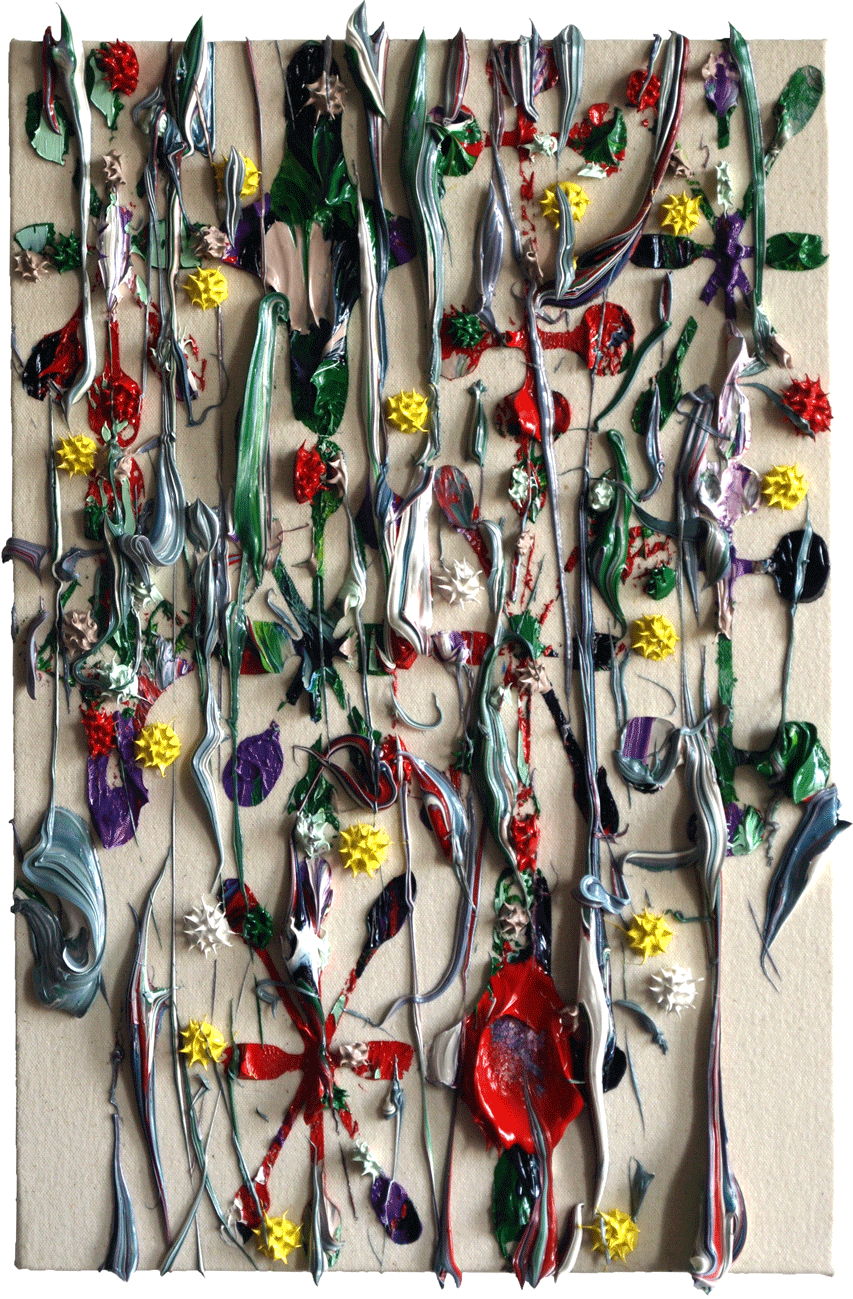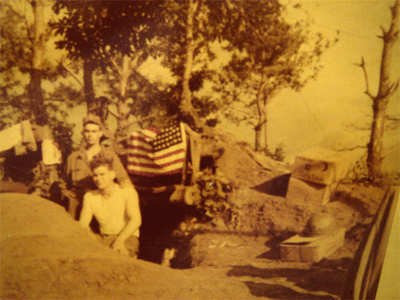May 31, 2015
limitlessness and a strange desire
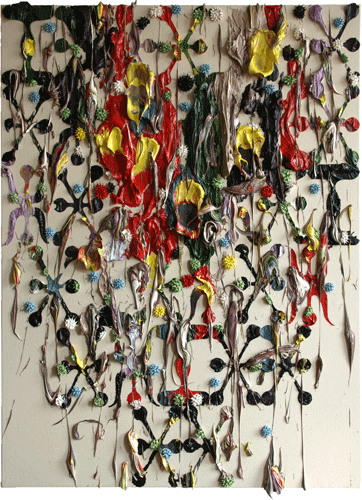
limitlessness and a strange desire
2015
#492
Oil on Canvas (over wood panel)

May 30, 2015
Review Panel 5/29/15
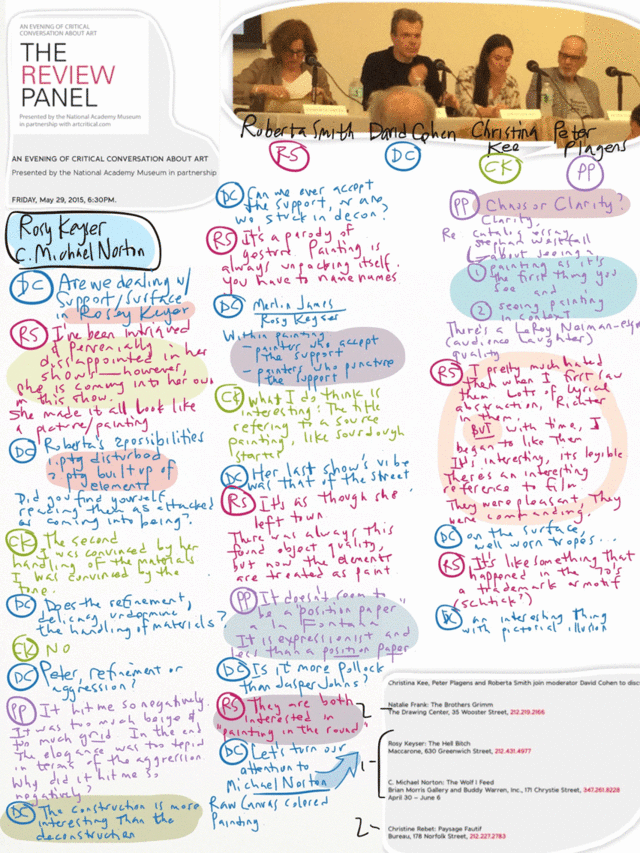
David Cohen's Review Panel just had their final event for the season last night at their host, the National Academy Museum adjacent to the Guggenheim and Central Park. Review Panel announces beforehand a group of shows that will be discussed, three critics other than Cohen expound on their impressions of the exhibitions in front of a live audience, who have had the opportunity to see the shows for themselves. I really appreciate the Review Panel, it's one of a kind, a special opportunity to hear a whole range of art critics as they expound their views live in person, both demystifying and humanizing them. While David encourages debate and any heat would be appreciated, conflicting views clash civilly and usually with humor, all of which imbues the event with an over riding concern for penetrating the intellectual heart of the matter, free of any egoistic grandstanding or academic point scoring.
(Here's the link to their YouTube page for the archive.)
I took three pages of notes this time, a record so far, they follow below the break. Here are my own thoughts about the exhibitions discussed last night, interspersed with the notes:
Rosy Keyser: The Hell Bitch
Maccarone, 630 Greenwich Street,NYC.
There has been a revivification of painting-as-art-material-to-the-bone in the past ten or fifteen years. Every art season and art fair have a few artists who shred and apply the plasticity of paint down to the wood and fabric of the support. Every time I had seen the stretcher bars and cut canvas, I thought of Robert Ryman, who extended art material status from the paint to the canvas, stretchers, staples and even the mounts to the wall. Locally to NYC, the Supports and Surfaces show has the privilege of owning the flag planted on the hill of painting unbound. In the Keyser show, I saw a possible Fabian Marcaccio alternative future where he had come down to earth. And of course, there is the Ur-deconstructor, Fontana, which every artist in this tradition must show deference. What Keyser has to contribute in this show are the dregs of diminishing options for painting in this tradition, so she is turning up the volume. But is the volume control knob turned up high enough? Are there enough click positions past ten? The press release is full of sound and fury, and like smack talk, you had better be ready to back that shit up. But standard commercial art supplies are insufficient to the task, they are meant to literally support, to let another take the stage. Freed of this, what dimensions could a stretcher be? Fabricated from 2x12 lumber? Should the canvas as wide as buildings, should they be made of sails? What tool could be used to shred the material? An industrial wood chipper? All of these suggestions might be absurd, but the verbiage ("Hell Bitch", remember?) in the press release seems to promise such extents, and when it falls short, the little Stonehenge from Spinal Tap looms like a condemning ghost in a fevered dream.
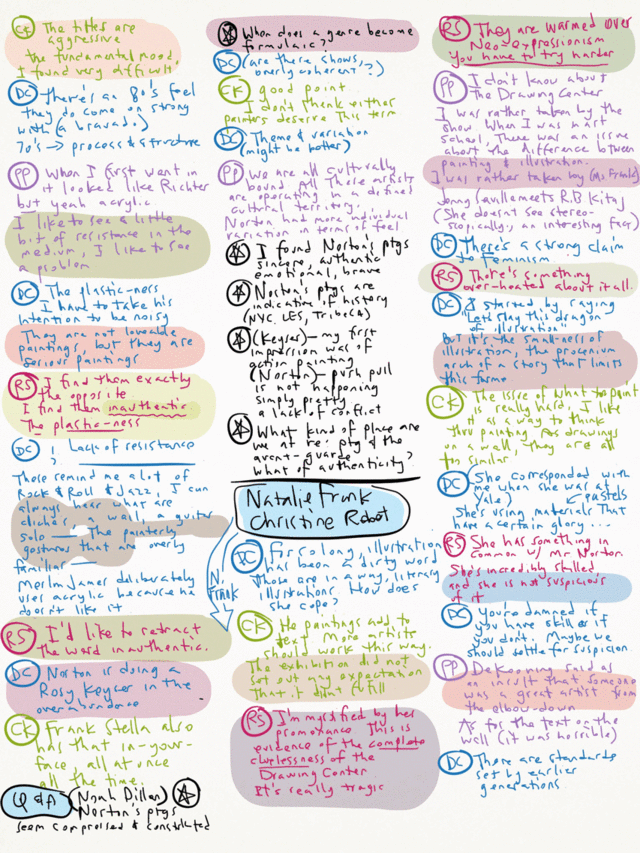
C. Michael Norton: The Wolf I Feed
Brian Morris Gallery and Buddy Warren, Inc., 171 Chrystie Street,
I shuddered as I saw aspects of my own work in this show. The masking and concomitant attention to edge, the bravado application of paint, the primary colors, the embarrassment of unreflective manly virtues, the in-your-face assertion of the glory of paint. No, I'm not like that. I hope that I am not like that. No, I am not like that. What is not there in Norton's work is a delicacy in counterpoint to the boldness, an implication of drawing in the masking -a kind of drawing that lightly plucks the strings of visual language, of primary colors that are pushed via the entropy of mixing toward dissolute mud and arrested in mid-flight, of self doubt balancing confidence, and finally, an existential condition of paint in a state of glorious fragility. I was turned off by the untempered brashness in all directions. I found it hard to linger in the exhibition. I was eager to leave.Natalie Frank: The Brothers Grimm
The Drawing Center, 35 Wooster Street, NYC.
Gouache underpainting, pastel rendering, ink or black gouache detailing. A book of illustrated fairytales is made available, and one can see how the camera amplifies the aura of the illustration by collapsing technique ever so slightly. I immediately thought of great artists as I looked at Frank's works on paper. Names such as Ensor (sparked by her rendition of faces, skulls, eyes), Goya (sparked by the dreamlike nature of her subject, bringing the Caprichos to my mind), Daumier (overtones of social commentary), Beckmann (the claustrophobic compositions)... but each and every time, after a very short time, her work withered with each association, damned by the conjured spirits. Could it be the problem of illustration and it's long lived inferior status? Jacob Lawrence Migrant series could be called illustration, ditto Goya's Caprichos and Daumier's political cartoons... but mostly, each are also the author of the content that they render. This could be a key distinction.

Christine Rebet: Paysage Fautif
Bureau, 178 Norfolk Street,
Bureau always struck me as if it were a university gallery, this show complied with this characterization. The obligatory genuflection to Saint Duchamp was signaled in the press release, I was interested however in the suggestion that she was running Marcel's project in reverse (a pet idea of mine, running artist's programs backwards), something about machines generating secretions / secretions generating machines. Perhaps I should have lingered to study the work more, but I saw little of this in the show. I've seen a few painterly expressions in film recently (it's hard to cite them all at the moment, but trust me on this), where artists treat emulsion and film like fluid paint on canvas. It's hard to know if this is a precursor or if the artist is following what might be a trend. I came away with trivial thoughts about how to rearrange the show for a larger impact: to mount the film presentation as a proper theater in the back room and gather all the works on paper (were they generative or were they products for sale to support the making of a hard to market film?) in the front gallery. I left the gallery with a vague impulse of getting to the student union for a bite to eat before philosophy class started.
May 28, 2015
#TBT
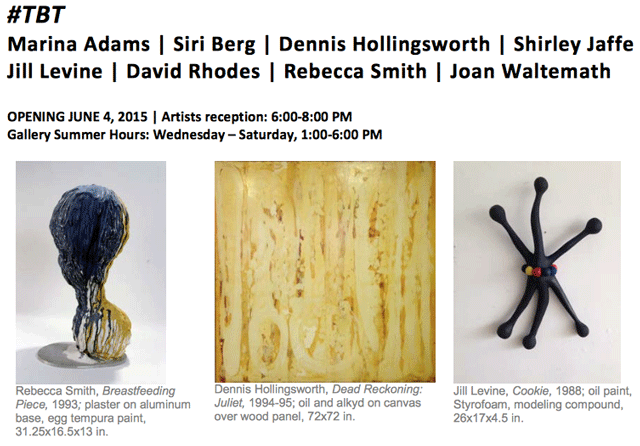
I'm very happy to be included in the group show at Hionas Gallery next Thursday, #TBT (Throwback Thursday).
Hionas Gallery | 124 Forsyth Street | NYC 10002 | www.hionasgallery.com
From the press release:
New York, NY (May 21, 2015) Hionas Gallery is pleased to present the group exhibition #TBT, comprised of select vintage works from the 1970s, 80s, and 90s by Marina Adams, Siri Berg, Dennis Hollingsworth, Shirley Jaffe, Jill Levine, David Rhodes, Rebecca Smith, and Joan Waltemath. Curated by Peter Hionas, this exhibition highlights rare works by accomplished contemporary artists as they were coming into their own, each discovering and experimenting with the visual building blocks that would soon form each respective singular language.For Rebecca Smith, painted plaster would give way to painting-sculpture hybrids comprised of conjoined steel bars off set by interference paint; for Dennis Hollingsworth, canvases saturated in an Alkyd compound would evolve into a pure impasto medium of viscous oils; and for Jill Levine, her lifelike-cum-abstract sculptural forms would become distinct totems steeped in a mixture of Pop and mythology.
For anyone familiar with any of these artists' bodies of work, this glimpse into the not-so-distant past is an education in how painterly languages take root and how artists discover that abstraction, in all its varied shapes and forms, is an exercise in control and a lack thereof.
All of the exhibited artists, with the exception of Shirley Jaffe, have previously exhibited solo shows with Hionas Gallery, as well as been included in previous group shows. A full listing of all past gallery exhibitions can be accessed here.
The opening reception for #TBT will take place on Thursday evening, June 4, beginning at 6:00 PM. A full color catalog of the artists' works, both past and present, will be available during the exhibition's run. For more information visit www.hionasgallery.com.
May 26, 2015
ensnarled by Minerva's serpents
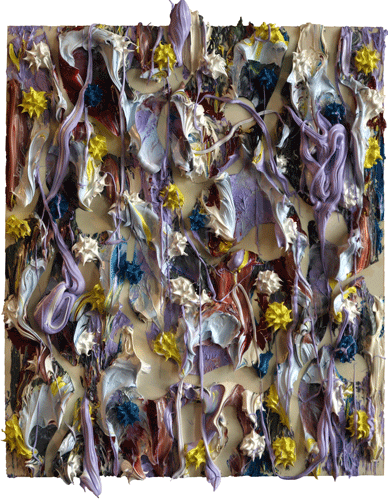
ensnarled by Minerva's serpents
2014
WOP 7-14
Oil on Paper
12"x10"
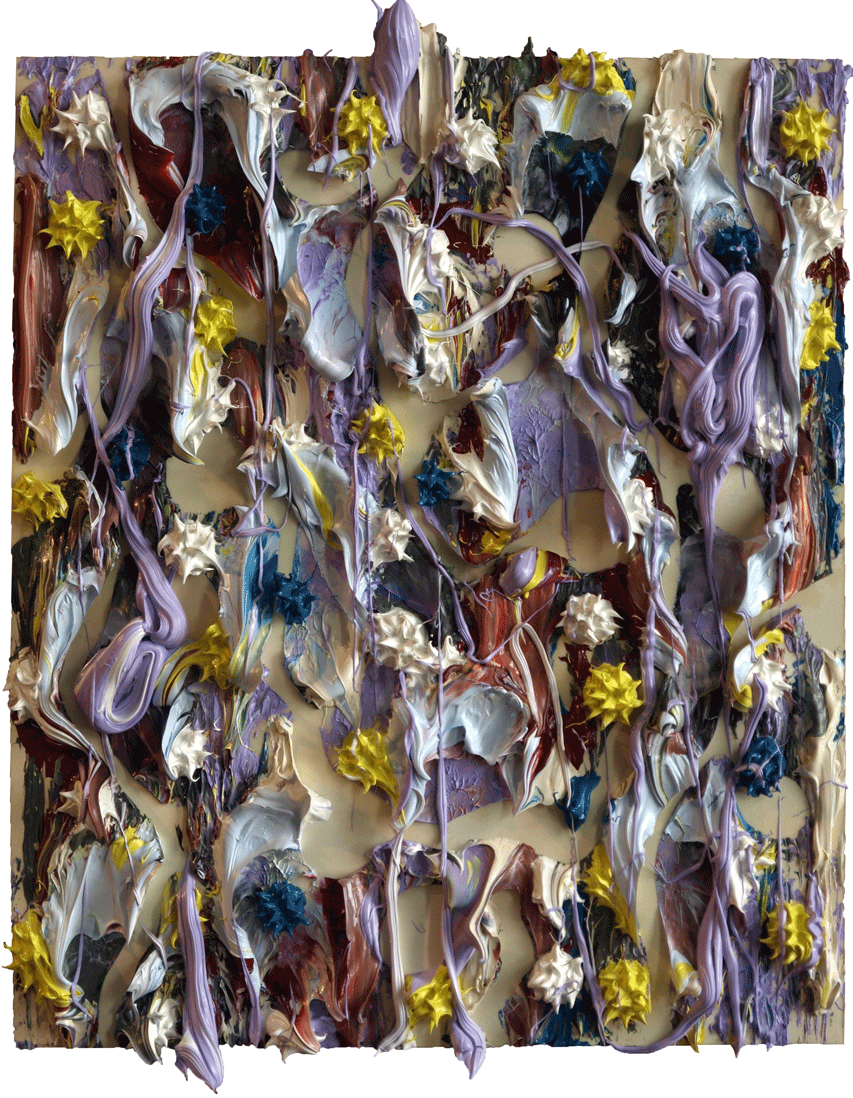
May 25, 2015
Memory
It's Memorial Day.
This video of MSG Roy Benavidez reminds me a bit of my dad. The Texan accent (papa was born in Galveston and raised in the boot heel of Missouri), the military rectitude so lightly borne, the sense of a baked-in moral compass, the easy self depreciation, a deep layer of kindness and gentleness, a deeper layer of grit... all echo for me.
There are some differences between Benavides and my dad. The MSG has been through hell, his second time lasted... six hours, maybe twelve? My dad cumulatively had days, maybe months of unspeakable hell.
Papa never talked about his experience of war. I had only overheard him describe it once to my uncles when I was a kid. He took his story to the grave. So I listen to Benavides, pretending that it was my dad who was so at peace with himself.
Below the fold is a reposting of a 2007 Memorial Day blog entry about my dad's experiences in the Korean War.

My father's life was framed by the Korean War. Fifty years separated a battle that wiped out 197 of 215 men and my father's eventual PTSD, in which uncontrollable flashbacks prompted his demise near the very anniversay of that massacre. I heard him speak of that day only once in my life. It was an abbreviated account.
He came to the position politically that the war was a waste and terrible and that no one in their right mind would want to bring it on. As time passed, I began to consider that he was speaking personally, that the war he experienced stole his life in some way. I told him of the large Korean community in Los Angeles, of how healthy and vibrant they are. I told him of hte satellite photos of the Korean pennisula at night, of how many generations of families have enjoyed happy lives as a result of his efforts so long ago. I was hoping that he might realize that his sacrifice had a purpose, that his pain purchased some measure of good in the world.
Tragically, I don't think he could feel where I was coming from.
I found a book that is a good dry historical account of what happened on that day, however fragmented as it is. I thought that a good way to co-memorate Memorial Day is to share the relevant bits with you after the jump...
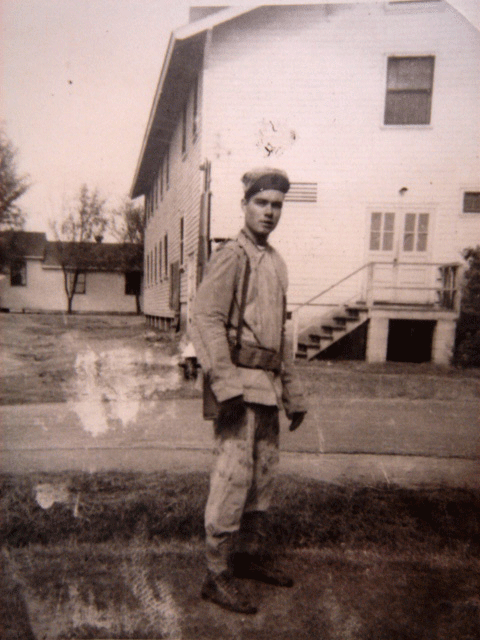
He was stationed on Okinawa (in the 29th Infantry, Baker Company, 1st Battallion, 3rd Regimental Combat Team) when the North Koreans pushed south to the Pusan Perimeter, the small rump on the southeast end of the pennisula. Events were developing so rapidly, that we had to dump troops into a malestrom.
He was eighteen at the time.
The first reinforcements to arrive were 1/29 and 3/29 from Okinawa. The original plan was to train the two battalions in Japan for six weeks. within days, this was changed. MAJ Tony J. Raibl, XO of the 3/29 had been sent ahead to Japan, where he learned on July 20 that the two battalions of the 29th would not stop in Japan, but continue to Korea.......MAJ Raibl next was told that the battalions would have 10 days of "intensive field training" near Pusan. When he arrived in Taegu on July 22nd, Raibl had an extensive conference with GEN Walker. As a result of this meeting, the major understood that the battaliions would have three days at Pusan to draw equipment, zero and test fire weapons.
But when the two battalions unloaded at Pusan on the 24th, they were rushed to Chinju and attached to the 19th Infantry Regiment. They were allowed no time for anything. Rifles were not zeroed-in, nor crew-served weapons test fired. Some weapons test fired. Some weapons, such as the newly issued .50 cal machine gus were still in cosmoline. The perilous tactical situation on the southern front virtually dictated that these two commands be rushed there at once, otherwise the decision to rusht he 29th to combat in this fashion would have been criminal. As it was, both commands suffered crippling losses in their first battles.
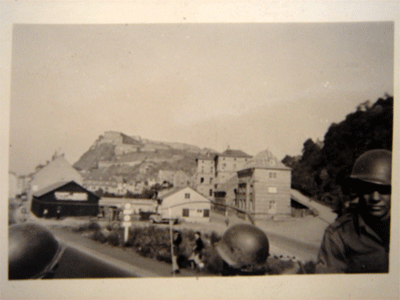
Possibly contributing to troubles of both battalions was the fact that both of their commanders were new to their commands, and neither had combat experience. LTC Wesley Wilson (West Point 1929) , then 43, commanded the 1st battalion, LTC Harold W. Mott commanded the 3rd.My father curtly described the combat as that which happened in waves, of being mired in struggles in which anything in reach was used as a weapon. Knives and pistols and M-1 carbines spent and used as clubs, bodies stacked between assaults to form defensive positions. Ultimately, there were no words to describe the mayhem.On the afernoon of July 25th, the two commands arrived at Chinju. That evening, 3/29 was ordered to take Hadong, a road junction town 35 miles southwest of Chinju.
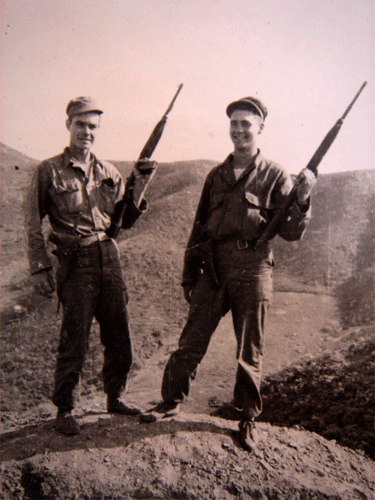
His commanding officer was LT John Hughes, a tree trunk of a man, whose character was oak. My father's abbreviated description of that time was an image of Hughes crawling down a hill; eyes wild, knife in one hand and a pistol in the other. My dad said "I made eye contact with LT Hughes and pointed to the Korean interpreter..." knowing that he was the key to find an exit from the slaughter, "...and I made maximum effort to get to him and cross the river." the only alternative out of the kill zone.
In all, LT Hughes had 215 men in his B/29th... was initially deployed on high ground west of Annui. The enemy attacked with superior forces from three sides, putting the Americans in desperate battle from the beginning. By nightfall on july 27, Co. B had been forced back into the town. Hughes planned to high ground across the Nam River east of town. Two officers and 16 (enilsted men) got across the river before enemy machine gun fire cut off the rest of the unit. These 18 men tried to help the others break out, finally, giving up and making their way through the hills to the 34th near Kochang.I don't know how long they were out in the countryside, escape and evasion, but it was over a week. He drew vignettes of stealing food from villages at night, approaching the sentry position at the perimeter of friendly forces with shouts of vulgarities to authenticate that they were Americans. He said that the food and shower there was the best he ever had.
Posted by Dennis at 3:57 PM | Comments (1)
May 24, 2015
May 11, 2015
all that is permitted
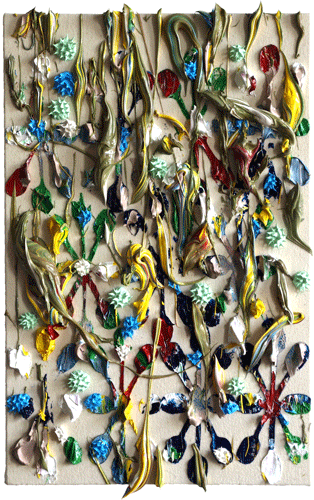
all that is permitted
2015
#490
18"x12"
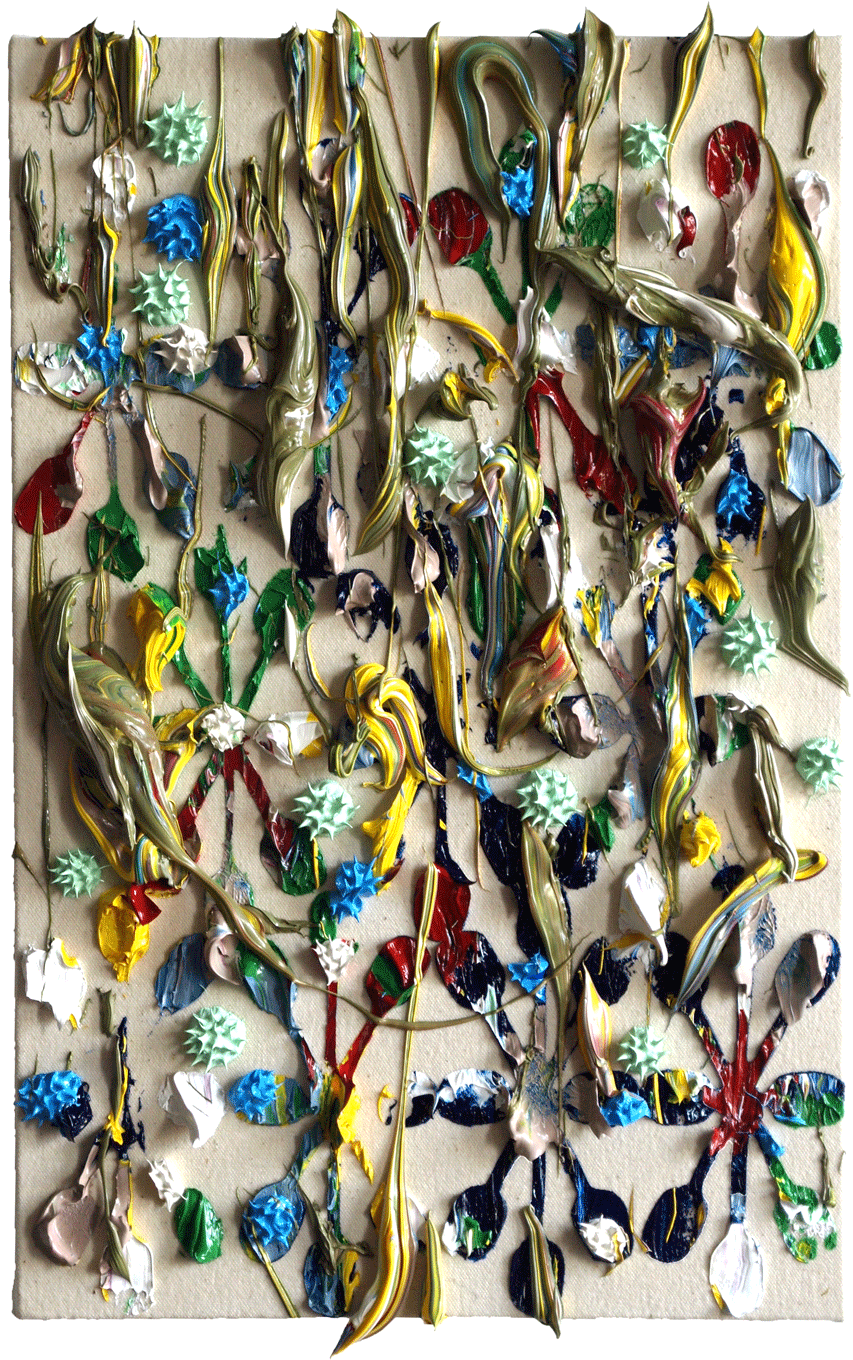
inherent, pervading
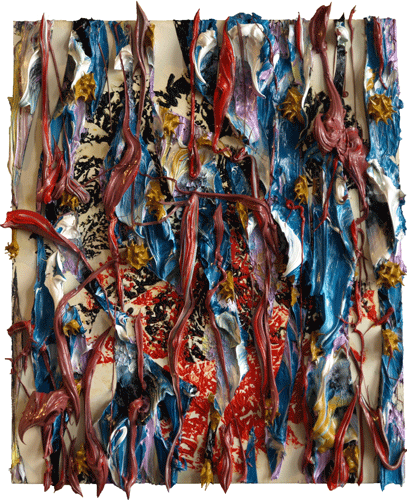
inherent, pervading
2014
WOP 6-14
12"x10"
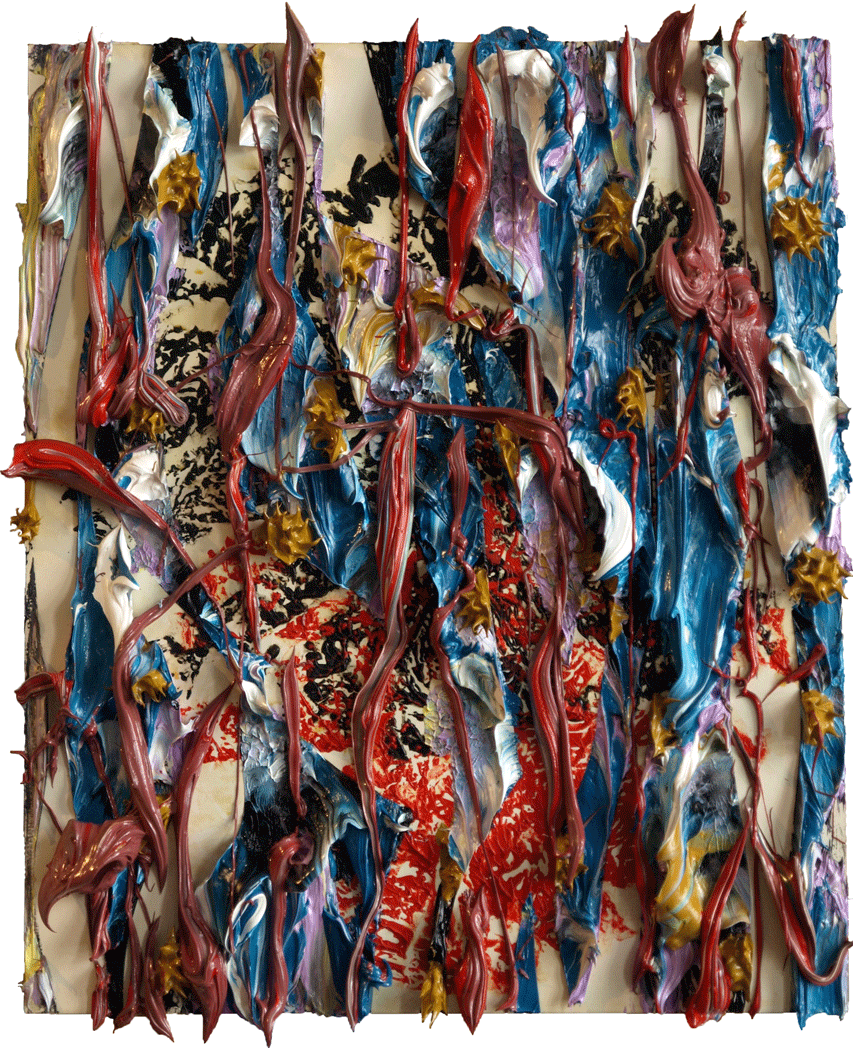
Renzo Piano's Arc
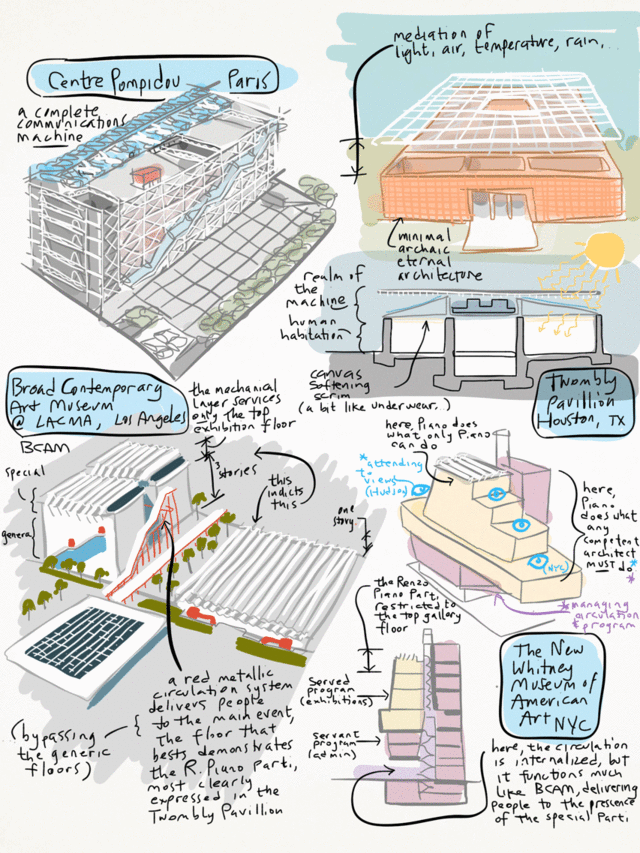
Here are some thoughts (a crit) regarding Renzo Piano and his design of the new Whitney Museum in New York City:
Centre Pompidou
Le Corbusier referred to his Villa Savoy in this way: "Une maison est une machine-à-habiter", as a machine for living in. Architects Piano, Rogers and Franchini described the Centre Pompidou as "a communications machine". Renzo Piano proceeded in his career to express this idea in a particular poetic architectural language.
Cy Twombly Pavilion
Of the several iterations of Piano's realization of the Corbusian machine (in examples such as the Menil Collection Beyeler Foundation), the Cy Twombly Pavilion is the best and most elegant. The parti* is clear and concise. Expressions of human habitation is archaic and eternal with echoes of ancient stone masonry, elemental and primal. The realm of the machine is a mediating technological layer separating human habitation from the raw environment. This mechanical layer is as robust as it is hidden and only furtively revealed. The realm of the machine mediates between man and nature.
Broad Contemporary Art Museum at LACMA
Variants of this mediating parti were exercised in the Piano oeuvre but with less poetic clarity. In the Broad Contemporary Museum at LACMA Los Angeles (BCAM), Piano returned to the parti, but muddled its lucidness by misapplying it to a multistory structure. The technological membrane roof is a good one story solution, a multistory program requires a different approach, a different parti. The capacious floors below the top floor are not graced by the mediating technological membrane, they have a generic architectural expression. The floors below are an afterthought. This problem is awkwardly addressed with an elaborated metal circulation system (painted red, no less!) of external stairs and escalators that bring the public to the main address of the top floor where the parti establishes itself there and only there.
Whitney Museum of American Art
The problem of the misapplied parti persists in the new Whitney Museum. The unique solution of the mediating technological membrane can only be applied to the smallest of galleries on the top floor of the museum. As it is in BCAM, the circulation system delivers the public to the main event, as necessarily modest as it is even so in expression. The awkwardness of the generic expression in the lower floored galleries is ameliorated with the generous terraces that extend outward to Manhattan. The grandeur of the architecture is delivered by common sense architectural solutions and less by the particular vision of Renzo Piano, which is as yet restricted by a parti better suited to a single story program.
* A parti is a concise expression, usually geometric, of an architectural scheme and design.
May 1, 2015
yet still floating in the air

yet still floating in the air
2015
#489
18"x12"
Oil on Canvas
